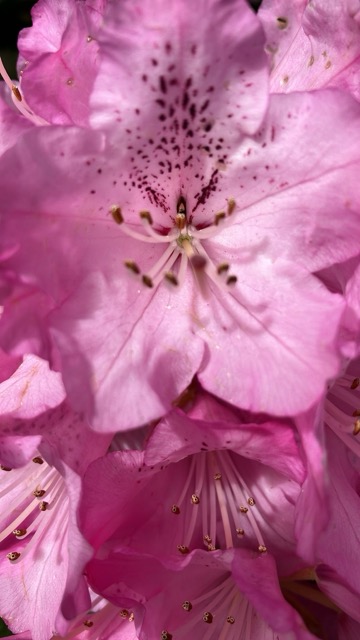
28th April 2024
I had started the day with a distinct yearning to go somewhere. Quite where I did not yet know, and no amount of poring over the map proved to satisfy this dilemma. I considered the village of Culross, not very many miles away across the Firth, but it seemed too far for a day-trip given the involute nature of the bus routes required to get there. Instead, as I traipsed off towards Haymarket, I caught eye of the number 44 bus, bound for Balerno.
It was not, I should mention, my original intention to venture to Balerno so soon after I had been previously. I had taken a walk through the Pentland hills but the Weekend before this, and returning to Balerno had seemed quite pointless indeed. I considered its merits though, before abandoning the bus: Malleny Garden would just be coming to flower in places, and indeed the Water of Leith, which itself starts in Balerno, had indeed been on my list for a good while. I boarded the bus and took a seat.
The route of the number 44 is one I greatly enjoy. It begins in Wallyford, near Musselburgh. Nearby and of note is Inveresk Lodge Gardens. It winds its way back through Musselburgh, vaugely traversing Portobello and Piershill, along Prince’s Street towards Haymarket, and out along Slateford road. From there it takes the direct road out through Spylaw, Junpier Green, Currie, and finally to Balerno. The second half of that journey, the one on which I would be embarking, goes through truly some of the most leafy and picturesque parts of Edinburgh.
As the bus pulled into Currie, a small town to the West of Edinburgh’s border, I was able to see small glimpses of the Water of Leith, along which I soon hoped to walk. It was not exactly the height of spring, far from it in fact, though the trees did somewhat leaf over the path which sat adjacent to the water itself.
I bid adieu to the bus on a bridge in Balerno, which forms the official start of the Water of Leith itself, but I did not yet venture down to its banks. Instead, I took a walk of but a few minutes to the exceedingly wonderful Malleny Garden. I do not feel in any degree competent to talk to the history of such a wonderful garden, however I feel no need: the place appeals to me on a level far more involved than simple technical interest; Malleny is a place I often find emotional refuge.
It, indeed, was quite as fantastic as expected. I ambled slowly past beds of shrubs and flora of sundry variety, some of which was in bloom, the rest evidently about to go. I took to a small bench which sat in the very North-East corner of the garden, against the wall. The view extended behind the beds up to the very end wall - the point at which I had first entered the garden, and through hundreds of fetching plants towards the Western boundary of the land.

A few moments passed in silence, before I decided to take up my wandering again. I had a good poke around the rest of the garden, before deciding I could perhaps allow myself lunch, even at a quarter past eleven. The advantage of eating this early was that I would feel obliged to stop for a strategic ice-cream halfway round the walk, a prospect I felt admittedly more excited than perhaps was justified.
As I sat and ate my lunch I looked out across the Water of Leith, I looked forward to the journey I had back to Edinburgh. Admittedly, I was a little hazy on the details, having not yet looked at a map, though I did know there was a good path to follow. The route starts just off the bridge upon which the number 44 stops, the path I had seen already on my way in. That the number 44 ran virtually the course of the Water of Leith was not a coincidence - for this was to be my escape route in case of emergency - or indeed in case of lack of a decent ice cream!
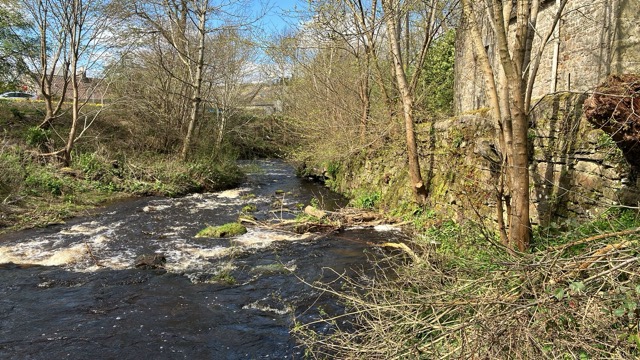
Having packed away, and feeling distinctly peckish still after eating salad pita breads (which was about the best I could do with the single lettuce and handful of tomatoes I had been greeted with upon opening the fridge) I tootled over to the gate and bid farewell to Malleny. It would not be long before I would once again return, but leaving always felt rather a reluctant activity, as the yearning for the peacefulness within restarted promptly after hearing the click of the gate behind me.
I made for the path aforementioned - which appeared to be fortuitously decently signposted: 8 Miles to Edinburgh proclaimed the brown sign above me - a figure who’s veracity I would come to doubt in the near future given the slightly fluctuant nature of the next signs in the series. I do like to read up on the places I go before I visit, even if just for some semblance of knowing where it is I am going. Between the impetuosity of this trip, and my rather lacking background research of the areas West of Edinburgh, I was rather unsure on the origins of the path and did hope for some decent signboards along the way. I do rather enjoy a decent signboard, and I see their decline and demise as a point of great sadness. I do feel that in part the Internet is to blame for this: information is significantly cheaper to publish digitally and has far more of a chance of reaching an audience. But, I also feel the information is significantly cheapened by this means of publication, and the authority with which it is presented often diminished. I see this decline in many forms: museums, etc, and I do feel it is an awfully glum state of affairs.
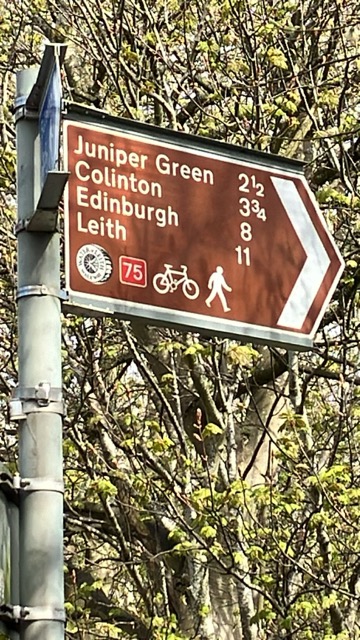
The path reminded me a lot of one with which I was already familiar: the Wylam Wagonway in Newcastle, extending into Northumberland. Once the testing ground for Stephenson’s Rocket, the path now forms a natural corridor between Newburn and the Northumbrian village of Wylam. As such, it retains many of its locomotive features, and is still distinctively a former railway. I could see this in the Water of Leith walkway - the way in which the retaining walls curved alongside the path, the way in which the path remained incredibly straight and had no tight curves even at bridges all screamed old railway. And as I looked into the woods to the side of the path I saw an old signaling wire pole, and veritably grinned at my assumption being correct.
I have something of a habit for following paths purely to see where they lead. What, after all, is the purpose of a path if not this? The main path did not split at any point particularly, but it did spur off little side paths to varied and interesting-sounding locations. One went off to the Pentland hills, another off to villages of which I had never heard, all of them looked like little woodland paths which went on for miles with no particular identity. It felt as if one were to walk along these paths, one would spend a great deal of time asking oneself if this was really the right way and when the hell one would actually find this long-forgotten village which had been promised. Thence, after many hours traipsing through thickets and being torn to shreds by brambles, one might find what was once a rural and isolated village, but which could now be visited through far easier means thanks to a motorway and one of seventeen different 4-minutely bus services from Central Edinburgh.
Currie was not one of these villages. I was familiar already with Currie the town, which I had passed through in order to get to Balerno in the first place, but Currie village was a place of whom’s existence I was unaware. Having crossed an old rail bridge which passed over the main road connecting the old Currie village to the much newer Currie town, on the other side of the Water of Leith and up the hill therefrom, I took the short path which slipped off into the village. Immediately I was confronted with the steps to Currie Kirk, which I sauntered up. Much like gardens, graveyards are somewhere I do find incredibly relaxing and calming. I suppose it is the sounds of nature which permeate them, and the rather revering attitude of other people there, it provides a familiarity, a comfort even, of sorts. Currie Kirk’s graveyard was of no exception - and a short wander through later, I re-embarked upon my walk.
Skipping forward through what was through pretty un-notable countryside (although there was a lovely old bridge I couldn’t bear to walk past without stopping on - I do love old bridges so very much). I say “un-notable” not in a dismissive sense, but in the sense that it changed very little from what I have described thus far, and I do entrust that you, dear reader, may be capable of filling in the details.
The next stop was to be Colinton, an absolutely fantastic little village which is now well absorbed into Edinburgh. Unlike many of Edinburgh’s other acquisitions, though, it has not failed to keep its identity in almost every way; it is almost indistinguishable from many of the country villages in which I spent a great proportion of my childhood. Perhaps the only indication one was in fact in Edinburgh was the frequency of the buses, and that they were red, not green.
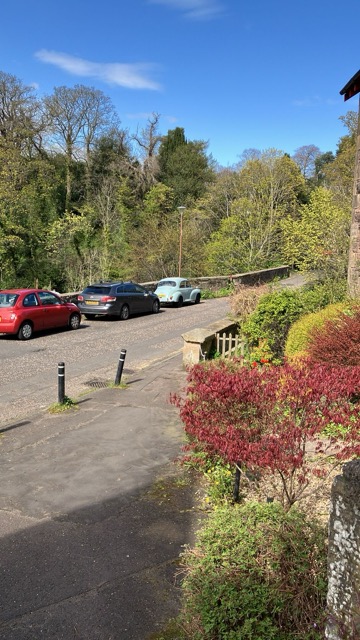
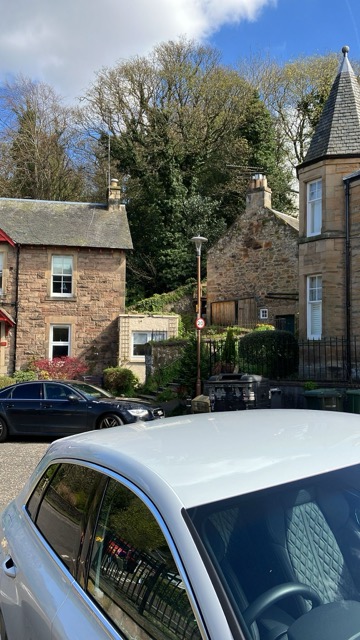
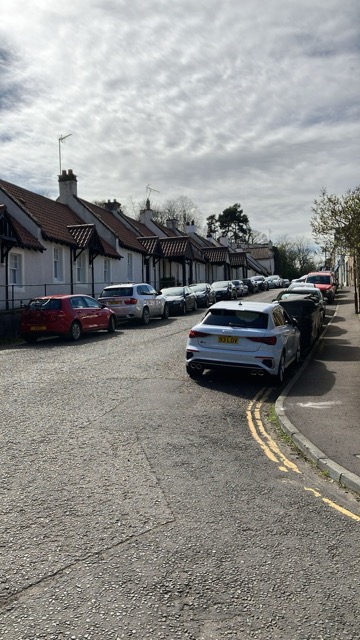
Colinton provided an incredibly necessary service to me: ice cream! For being the first of the year too, it was not a bad choice - a strawberry cornetto. I wandered back through Spylaw park, from where departs a number of walks which I have added to my list, and past Spylaw Bank House.
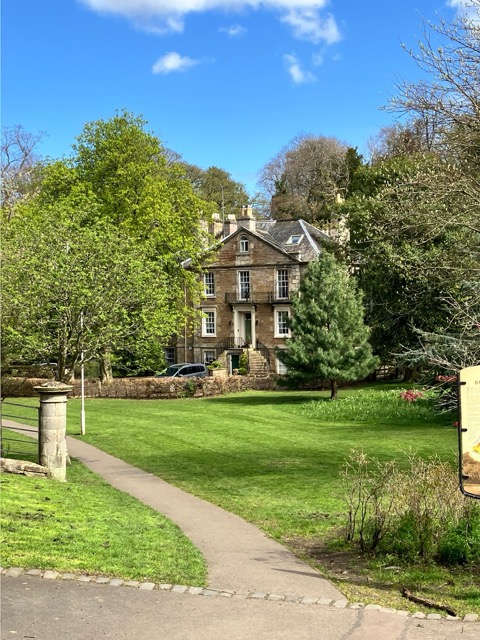
Leaving the park, the old railway goes through perhaps the third most famous landmark on the Water of Leith walk (behind Leith itself and the Dean Village), that being the Colinton Railway Tunnel. It tells, through graffiti the story of a Robert Louis Stevenson poem, given that he grew up in Colinton.
Now was the final push back to Central Edinburgh. I had the choice, further along the path of going via the Craiglockhart dells, or via the Union Canal. The canal I knew better, and that it would indeed be more convenient for my intentions, but at some point I must take a walk through the dells - they looked simply magical from the path I ended up taking.
The final part of the walk (aside from the canal, which whilst beautiful as always is somewhere with which I am incredibly familiar) answered a question I had had for many months: when on the number 44, the bus drives past a small grassy country lane in what is otherwise suburban Edinburgh, and with a curiosity like mine, I simply had to know where it led. It would indeed transpire that the last bridge which I was to encounter was in fact this lane’s end. I took the stairs up to the bridge itself, and immediately recognised the track-like quality of the ground, and made the connection to the “weak bridge ahead” sign which had additionally piqued my curiosity from the road.
My curiosity satiated, and my legs thoroughly tired, I retired home along the canal towpath.